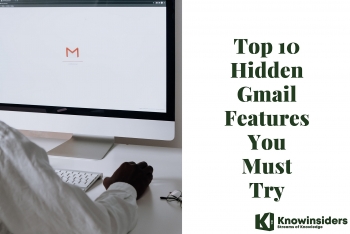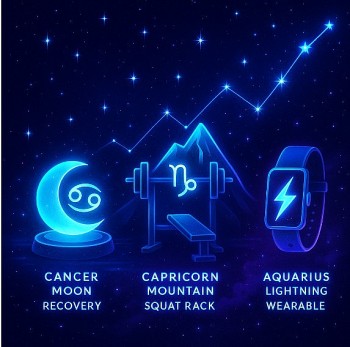What is Elon Musk’s Xmail, Gmail Rival?
 10 Hidden Gmail Features You Must Try 10 Hidden Gmail Features You Must Try |
 Top 10+ Oldest Apps That Still Exist Today Top 10+ Oldest Apps That Still Exist Today |
In the ever-evolving tech landscape, Elon Musk, the billionaire entrepreneur behind Tesla, SpaceX, and now X (formerly Twitter), has set his sights on disrupting another industry: email services. The introduction of Xmail, Musk’s answer to Google’s Gmail, has sparked curiosity, speculation, and excitement in the tech community.
 |
| Elon Musk announced XMail, competing with Gmail |
The Emergence of Xmail
Elon Musk is no stranger to disrupting industries. From revolutionizing the electric vehicle market with Tesla to advancing space exploration with SpaceX, his ventures often start with a bold vision. His rebranding of Twitter to X hinted at a more ambitious plan to create an all-encompassing “everything app.” Xmail is rumored to be a key component of this vision, positioning itself as a serious contender in the email market dominated by Google’s Gmail and Apple Mail.
As of September 2024, Apple Mail leads the global email client market with a 53.67% share, followed by Gmail at 30.70%. Other notable email clients include Microsoft Outlook (4.38%), Yahoo! Mail (2.64%), and Google Android (1.72%). However, a newly launched email feature backed by the world's richest man and the US President-elect’s 'First Buddy' could propel Xmail as a serious competitor not only to Gmail but potentially even Apple Mail.
While no official launch date has been announced, Musk hinted during an X Space in late 2024 that the initial beta version of Xmail could debut as early as mid-2025. This tentative timeline suggests Musk’s focus on ensuring that Xmail offers robust features and scalability from day one, rather than rushing the product to market.
What Sets Xmail Apart?
Xmail’s differentiation lies in its promise of innovation, integration, and a user-first approach. While the specifics about the service are still under wraps, several features and philosophies have been hinted at by Musk and his team:
1. Privacy and Security
One of the major criticisms of Gmail and similar services is their reliance on user data for advertising. Musk has been vocal about his disdain for invasive ad-based revenue models. Xmail is expected to prioritize privacy, possibly offering end-to-end encryption and a subscription-based model that eliminates the need for targeted ads.
This would put it in stark contrast to Gmail, which relies heavily on user data to support its ad-driven business model. Privacy-conscious users might find Xmail a more attractive option, especially in light of increasing concerns about digital surveillance.
2. Integration with the X Ecosystem
Xmail will likely integrate deeply with the broader X platform, which Musk envisions as an “everything app.” Users could seamlessly transition between email, messaging, payments, and social media functionalities—all within one ecosystem. For example, users might send an email, initiate a direct message, or conduct a financial transaction without ever leaving the X interface.
Unlike Gmail, which integrates well with Google Workspace but remains a standalone service, Xmail’s all-in-one functionality could redefine how users think about communication and productivity.
3. AI-Powered Features
Given Musk’s history with OpenAI and his ongoing interest in artificial intelligence, Xmail is likely to feature advanced AI tools. These could include:
- Smart Categorization: Automatically sorting emails based on importance or context.
- Predictive Replies: Suggesting responses based on past user behavior.
- Spam Detection and Filtering: Leveraging AI to detect and filter spam more effectively than existing email platforms.
While Gmail already uses AI for features like Smart Reply and spam filtering, Musk’s approach could push the boundaries further, potentially offering customization and predictive features that feel more intuitive and human-like.
4. Cross-Device Synchronization
Xmail is expected to offer ultra-fast synchronization across devices, potentially leveraging the same high-performance technologies Musk has used in Tesla’s infotainment systems and Starlink satellites. This could provide users with faster and more reliable access to their emails, even in areas with poor connectivity.
5. Decentralized and Encrypted Communication
Musk has shown interest in decentralized technologies, including blockchain. Xmail might leverage these technologies to offer decentralized communication protocols, giving users greater control over their data while enhancing privacy. This would be a stark departure from Gmail’s centralized model, where data resides on Google’s servers.
Challenges in Taking on Gmail and Apple Mail
Despite Musk’s track record of challenging entrenched industries, competing with Gmail and Apple Mail is no small feat. Together, these services dominate over 80% of the global email market. Here are some key challenges Xmail might face:
1. Entrenched User Base
Both Gmail and Apple Mail have deeply integrated user bases. Gmail is tied to Google Workspace, while Apple Mail is the default on millions of iPhones and Macs. Convincing users to switch to Xmail will require not only superior features but also a seamless migration process.
2. Reliability and Scale
Email services demand near-perfect uptime and robust security. Building the infrastructure to support millions—or potentially billions—of users is a significant technical challenge, even for a visionary like Musk.
3. Market Saturation
The email market is highly saturated, with established players like Gmail, Outlook, and Apple Mail leading the way. Xmail will need to present a compelling value proposition to break through user inertia and brand loyalty.
4. Regulatory Scrutiny
Given Musk’s increasing influence in the tech industry, Xmail could face scrutiny from regulators. Claims of prioritizing privacy might draw attention from governments concerned about data security and compliance with laws like GDPR and CCPA.
How Xmail Fits into Musk’s Larger Vision
To understand Xmail’s potential, it’s essential to consider Musk’s broader aspirations for the X platform. By transforming Twitter into X, Musk has signaled a desire to create a comprehensive app that combines communication, social networking, and financial services. Xmail could serve as a cornerstone of this ecosystem, providing email functionality that ties seamlessly into other X services.
For example, users could schedule meetings through Xmail, sync events to an X-powered calendar, and collaborate via real-time documents—all within one unified app. Unlike Gmail, which remains primarily focused on email, Xmail might offer a more holistic and integrated user experience.
The Road Ahead for Xmail
Although Xmail has yet to be officially launched, it’s already generating buzz as a potential disruptor in the email space. Musk’s track record of innovation suggests that Xmail could bring transformative changes to how we think about email, privacy, and integration with broader digital platforms.
As Musk aims for a mid-2025 launch, the coming months will reveal more details about the service’s features, pricing, and business model. If successful, Xmail could not only challenge Gmail but also redefine how email fits into the broader tech ecosystem.
Conclusion
Xmail represents yet another ambitious endeavor from Elon Musk, whose ventures consistently challenge the status quo. While Gmail and Apple Mail dominate the email market, Xmail’s focus on privacy, innovation, and integration with the X ecosystem could make it a formidable rival. If successful, it could not only disrupt the email market but also redefine how we think about communication in the digital age.
As the world awaits more details, one thing is certain: Musk’s entry into the email space will push the industry to innovate, benefiting users worldwide. Whether Xmail becomes the next big thing or simply a niche product remains to be seen, but it’s a development worth watching closely.
 Gmail Storage Full: How to Clean Up and Save Some Space Gmail Storage Full: How to Clean Up and Save Some Space Use Gmail long enough, and your free storage will buckle under the weight of modern digital life. With Google's free storage space ending for Google ... |
 Schedule in Gmail: Tool to Send Email Messages Later Schedule in Gmail: Tool to Send Email Messages Later It's easy to schedule send an email on Gmail if you want to compose an email, but schedule it to send at a later time. |
 How To Recall An Email in Gmail on iPhone, Android and Web How To Recall An Email in Gmail on iPhone, Android and Web There are a thousand reasons that you would need to call back an email in Gmail. But how to recall an email in Gmail on ... |
 Easy Ways to Improve Your Gmail Inbox Right Now Easy Ways to Improve Your Gmail Inbox Right Now If you're not using Gmail's schedule send feature yet, now's the time to start. Here's how to improve your Gmail Inbox as a master. |























